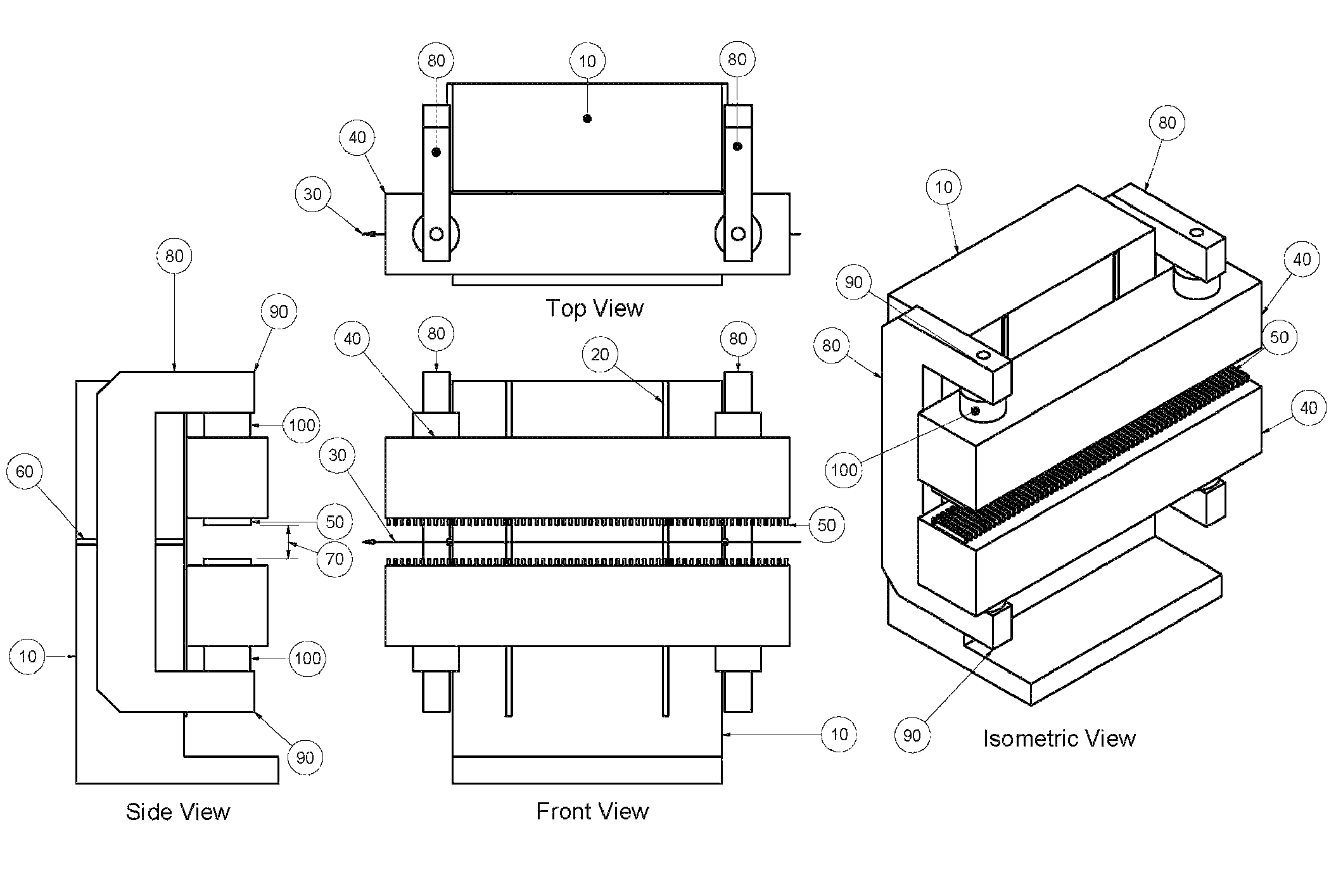Support structures for planar insertion devices
a support structure and planar technology, applied in the direction of accelerators, magnetic bodies, electrical apparatus, etc., can solve the problems of complex devices capable of moving the magnet array of polarizing insertion devices
- Summary
- Abstract
- Description
- Claims
- Application Information
AI Technical Summary
Benefits of technology
Problems solved by technology
Method used
Image
Examples
Embodiment Construction
Orientation Terms Used
[0022]Longitudinal direction refers to a direction parallel to the theoretical centerline of the synchrotron or linear accelerator particle beam. For practical reasons, the particle beam generally runs horizontally. Transverse direction refers to a direction orthogonally transverse to the particle beam and also horizontal. The remaining orthogonal direction is vertical.
[0023]In describing rotations, roll means a rotation about a horizontal axis parallel to the particle beam. Pitch means rotation about a horizontal axis transverse to the particle beam. Yaw means a rotation about a vertical axis.
Planar Insertion Device Construction—Current Technology
[0024]Referring now to FIG. 1, a planar insertion device according to currently practiced technology is shown, with an insertion device frame (10) affixed to the floor. The frame 10 holds linear guidance assemblies such as rails or ways (20), in a vertical orientation, allowing the girders (40) to move in the vertical...
PUM
 Login to View More
Login to View More Abstract
Description
Claims
Application Information
 Login to View More
Login to View More - R&D
- Intellectual Property
- Life Sciences
- Materials
- Tech Scout
- Unparalleled Data Quality
- Higher Quality Content
- 60% Fewer Hallucinations
Browse by: Latest US Patents, China's latest patents, Technical Efficacy Thesaurus, Application Domain, Technology Topic, Popular Technical Reports.
© 2025 PatSnap. All rights reserved.Legal|Privacy policy|Modern Slavery Act Transparency Statement|Sitemap|About US| Contact US: help@patsnap.com



